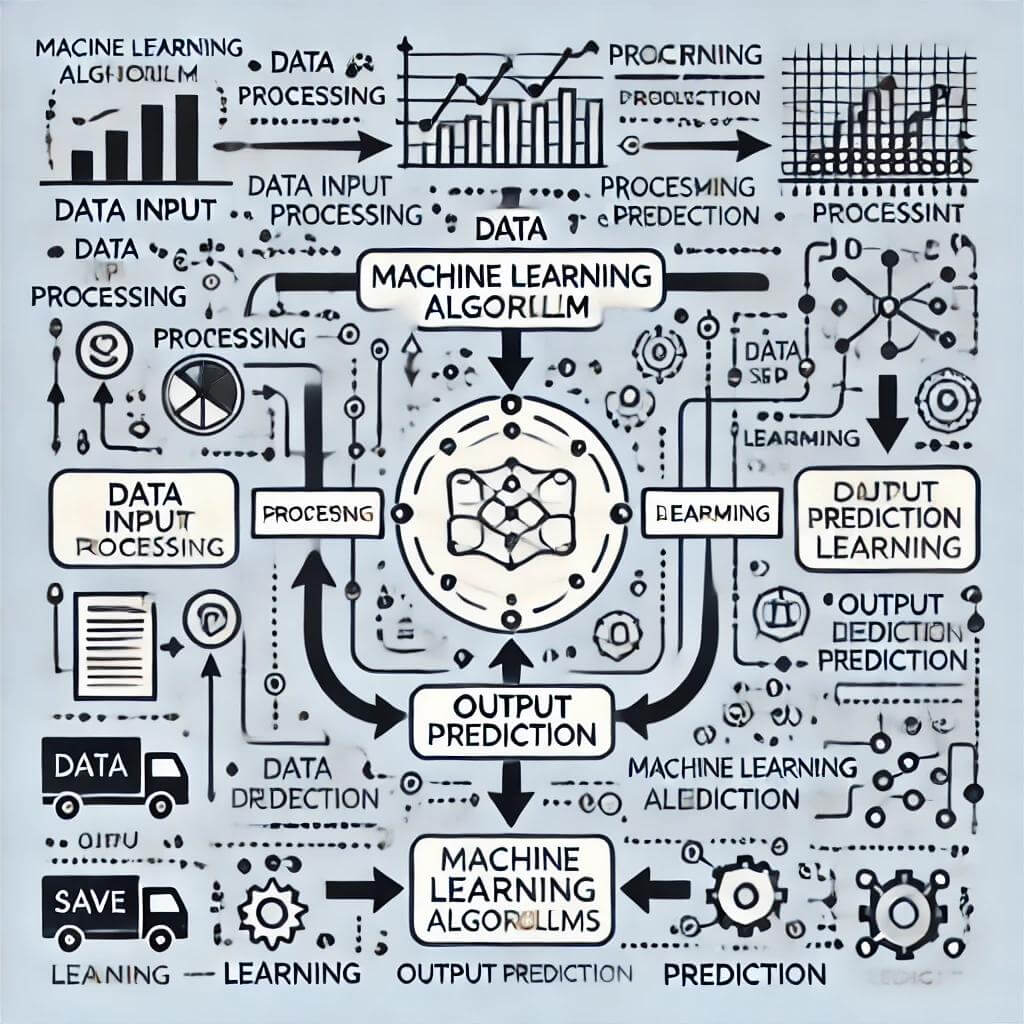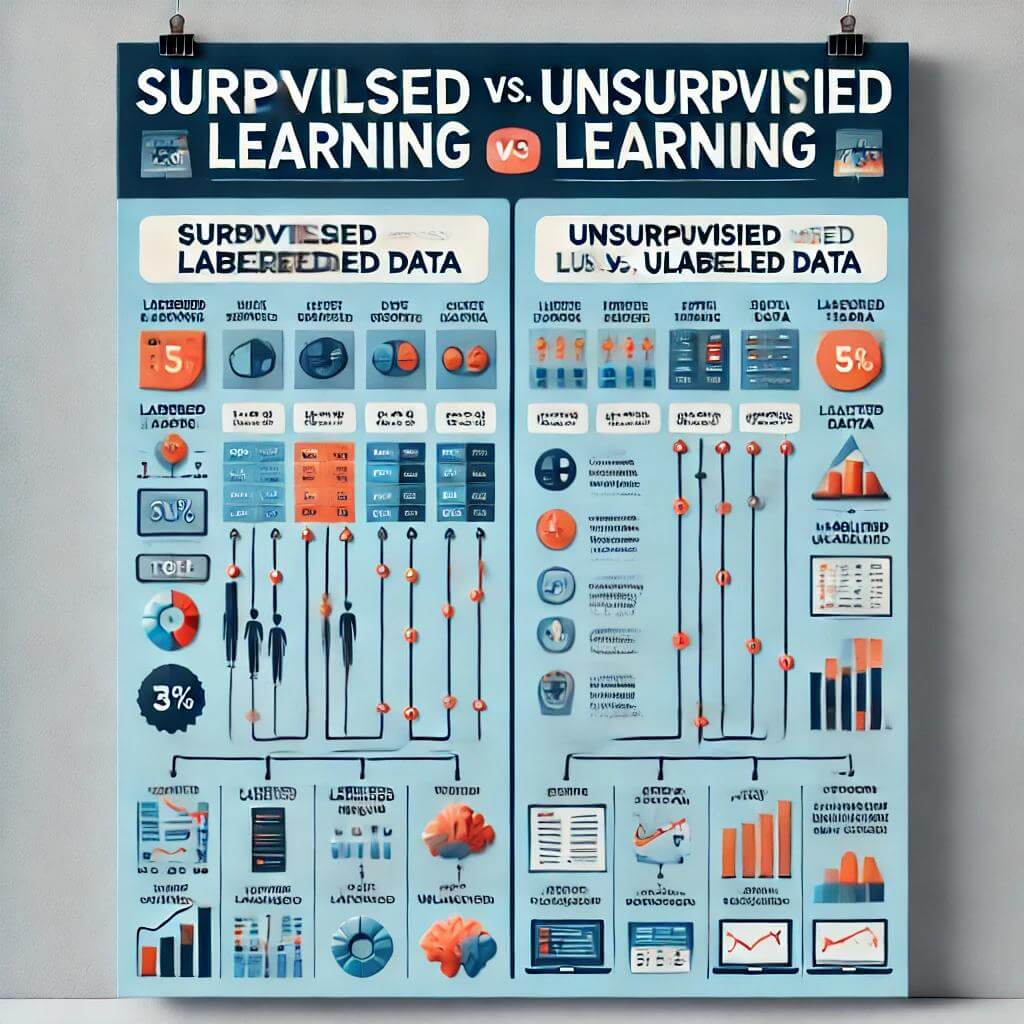Overcoming Machine Learning Challenges
Machine learning (ML) is transforming industries across the board. However, with great potential comes significant challenges that can obstruct your progress. Whether you’re just starting out or you’re experienced in building models, understanding the key hurdles is crucial. In this article, we’ll dive into the most common pitfalls in machine learning, explore their root causes, and learn how to overcome them effectively.
Data Quality Issues
One of the most significant hurdles in machine learning is ensuring data quality. The saying “garbage in, garbage out” is especially true in this domain. Without clean and relevant data, no model, regardless of how advanced, can perform well.
Common Data Quality Problems
- Missing Values: Datasets often contain missing values, which can significantly affect model accuracy.
- Noisy Data: Irrelevant or incorrect data points can introduce noise, causing the model to learn erroneous patterns.
- Unbalanced Datasets: This occurs when the distribution of classes is uneven, often resulting in biased predictions.
- Outliers: Extreme data points that can skew results.
How to Handle Data Quality Problems
To handle these challenges, there are several strategies:
- Data Cleaning: This process involves removing duplicates, imputing missing values, and addressing outliers.
- Feature Selection: Use techniques like Principal Component Analysis (PCA) to choose the most relevant features.
- Data Normalization: Applying normalization or standardization to ensure that all features operate on the same scale.
# Example code for scaling data
from sklearn.preprocessing import StandardScaler
scaler = StandardScaler()
scaled_data = scaler.fit_transform(data)
| Problem | Solution |
|---|---|
| Missing Values | Imputation (e.g., mean, median) |
| Noisy Data | Smoothing techniques, filters |
| Unbalanced Data | SMOTE (Synthetic Minority Over-sampling Technique) |
Overfitting and Underfitting
In machine learning, striking the right balance between model complexity and generalizability is key. Overfitting and underfitting are two common issues that arise when this balance isn’t achieved.
Overfitting
- Definition: Overfitting occurs when the model is too complex and learns both the noise and the signal from the training data.
- Consequences: This results in excellent performance on training data but poor performance on new, unseen data.
- Why It Happens: Overfitting often occurs when a model has too many parameters or when the training data is too specific.
Underfitting
- Definition: Underfitting occurs when the model is too simple and fails to capture the underlying patterns in the data.
- Consequences: This results in poor performance on both training and new data.
- Why It Happens: Underfitting typically occurs when there isn’t enough data or when the model chosen is not complex enough.
How to Handle Overfitting and Underfitting
To address these challenges:
- Cross-Validation: Implement techniques like k-fold cross-validation to ensure your model generalizes well to unseen data.
- Regularization: Apply regularization methods such as L1 (Lasso) or L2 (Ridge) to penalize overly complex models.
- Simplify the Model: If overfitting occurs, consider using simpler models, such as linear regression, or reducing the number of features.
# Example code for Ridge Regularization
from sklearn.linear_model import Ridge
ridge_model = Ridge(alpha=1.0)
ridge_model.fit(X_train, y_train)
Interpretability of Machine Learning Models
As models become more sophisticated, they often become black boxes, making it difficult to understand how they make decisions. This lack of transparency can be a problem, especially when your model’s decisions need to be explained to non-technical stakeholders or regulators.
Challenges with Interpretability
- Complexity of Deep Learning Models: Algorithms like neural networks are highly effective but difficult to interpret.
- Regulatory Requirements: In some fields, like healthcare or finance, you must explain how decisions are made, which can be tough with black-box models.
Improving Interpretability
Several tools and techniques help in interpreting complex models:
- LIME (Local Interpretable Model-Agnostic Explanations): LIME explains individual predictions by approximating the model locally with simpler models.
- SHAP (SHapley Additive exPlanations): This technique shows the contribution of each feature to the model’s predictions.
# Example code for SHAP
import shap
explainer = shap.Explainer(model)
shap_values = explainer(X)
shap.summary_plot(shap_values, X)
| Tool | Functionality |
|---|---|
| LIME | Explains individual predictions |
| SHAP | Provides global feature importance |
Insufficient Data
Data is the backbone of machine learning. Sometimes, the dataset you have isn’t large enough to train a robust model, leading to insufficient data issues.
Challenges with Insufficient Data
- Small Sample Sizes: Small datasets can result in poor generalization, where the model doesn’t learn the underlying patterns well.
- Data Scarcity: In fields like healthcare or specialized industries, collecting data can be expensive or difficult.
Overcoming Insufficient Data Challenges
- Data Augmentation: For image data, apply transformations like rotation, flipping, and zooming to create additional data points.
- Transfer Learning: Use pre-trained models from similar tasks and fine-tune them for your problem.
- Synthetic Data Generation: Generate artificial data using algorithms like SMOTE to balance your dataset.
# Example code for generating synthetic data
from imblearn.over_sampling import SMOTE
sm = SMOTE(random_state=42)
X_res, y_res = sm.fit_resample(X_train, y_train)
Bias in Machine Learning Models
Machine learning models can unintentionally reproduce or even amplify biases present in the data, leading to unfair outcomes. This issue is particularly critical in domains like hiring, lending, or criminal justice.
Sources of Bias
- Historical Data: If the training data is biased, the model will learn these biases.
- Algorithmic Bias: Some algorithms can exacerbate existing biases by favoring certain groups over others.
How to Handle Bias
- Balanced Datasets: Ensure that the data used to train the model is representative of all groups or categories.
- Bias Detection Tools: Use tools like IBM AI Fairness 360 to detect and mitigate biases in the model.
- Fairness Constraints: Implement fairness metrics into your model’s evaluation process to avoid biased outcomes.
Hyperparameter Tuning
Hyperparameters are values that are set before training begins and have a significant impact on model performance. If not tuned properly, they can lead to suboptimal results.
Challenges in Hyperparameter Tuning
- Manual Search: Searching for the right hyperparameters manually can be time-consuming and inefficient.
- Large Search Spaces: Many models, like deep neural networks, have a vast number of hyperparameters, making the search space huge.
How to Optimize Hyperparameters
- Grid Search: A brute-force approach that searches across all possible combinations of hyperparameters.
- Random Search: Instead of checking all combinations, it selects random combinations, which can be faster.
- Automated Tools: Use tools like AutoML to automate the tuning process.
# Example code for Grid Search
from sklearn.model_selection import GridSearchCV
parameters = {'alpha': [0.1, 0.5, 1.0, 10]}
grid = GridSearchCV(Ridge(), parameters)
grid.fit(X_train, y_train)
| Tuning Technique | Strengths | Weaknesses |
|---|---|---|
| Grid Search | Comprehensive search | Computationally expensive |
| Random Search | Faster than Grid Search | May miss optimal hyperparameters |
| AutoML | Automates the process of hyperparameter tuning | Requires setup and expertise |
Conclusion
Machine learning is powerful, but like any tool, it comes with its challenges. From data quality issues to overfitting, each problem requires specific strategies to overcome. By applying the techniques outlined in this article, such as cross-validation, bias detection, and hyperparameter tuning, you can improve model performance and reduce the risk of common pitfalls.




Post Comment